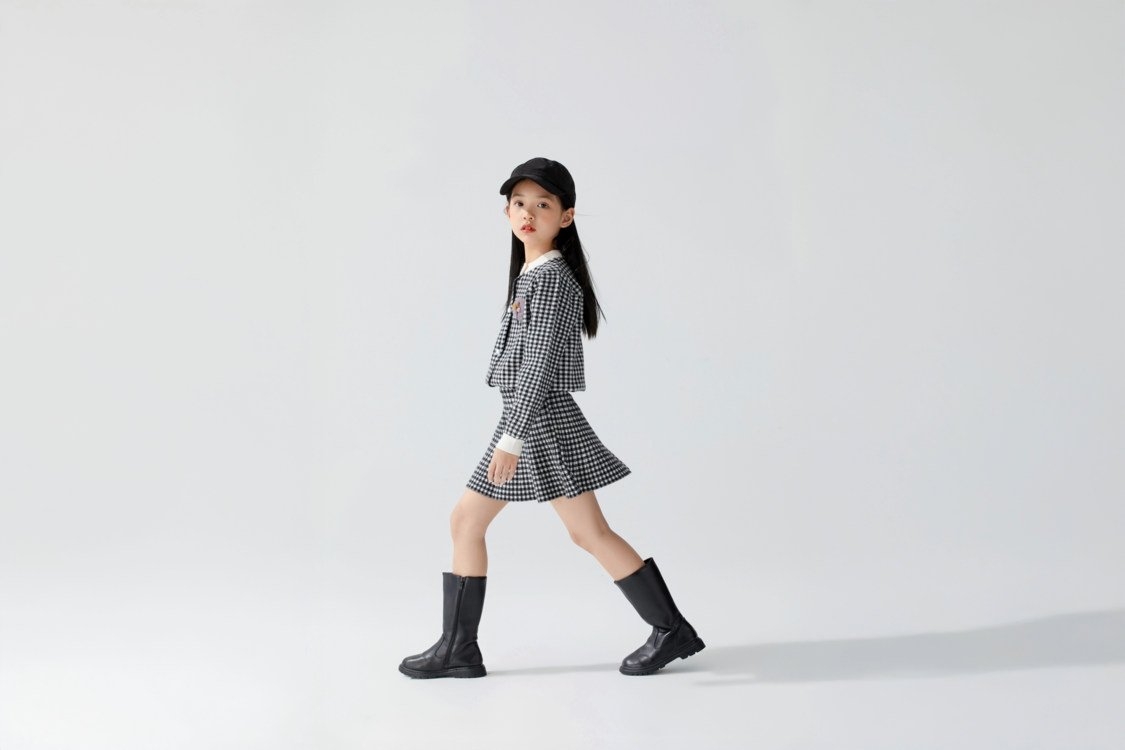November 2024
How to Take Body Measurements for Online Shopping
Ester Bazzanella

Shopping for clothes online has its perks – convenience, easy browsing, more options, and it’s often cheaper than shopping in person. But it also comes with the added challenge of having to pick out the right size without trying clothing on.
So, what’s the secret to online shopping success?
Accurate body measurements.
If you have accurate body measurements, it’s much easier to purchase the right size by accessing size charts. In this article, we’ll give you a detailed guide to taking body measurements, as well as other tips to help you purchase the perfect fit.
Why Accurate Measurements Matter
Clothing sizes vary across brands – what one company considers a medium might feel like a small from another. That’s why body measurements are so important. Regardless of a brand’s sizing, your measurements are the golden ticket to understanding their size charts and navigating sizing inconsistencies. With a tape measure and a few minutes, you can set yourself up for online shopping success and fewer returns!
How to Take Your Measurements
Accurate measurements require the right tools and techniques. Grab a soft measuring tape, a mirror, and wear form-fitting clothing or undergarments. While you can take your measurements yourself, it’s really not ideal – and in the case of some measurements, it’s just not possible. If you can, ask someone else to take your measurements for you. Stand naturally, don’t suck in or puff out, and measure with the tape snug against your skin without pulling it too tight.
Women’s Body Measurements
Bust: To measure your bust, wrap a soft measuring tape around the fullest part of your chest and across your back, keeping the tape level. Relax your shoulders and let your arms rest naturally at your sides to avoid distorting the measurement. This measurement is crucial for tops, dresses, and jackets to ensure a comfortable and flattering fit.
Shoulders: Ask a friend to measure across your back from the tip of one shoulder to the other. Keep your posture relaxed and natural while measuring. Accurate shoulder measurements ensure a proper fit for structured tops, jackets, and blazers.
Waist: Find your natural waist by bending slightly to one side; the crease that forms is your true waistline. Wrap the measuring tape snugly around this spot, just above your belly button, but don’t pull it too tight. Knowing your true waist measurement helps you choose pants, skirts, and dresses that fit perfectly without gaping or feeling restrictive.
Hips: Stand with your feet together and wrap the measuring tape around the widest part of your hips and buttocks. This area is usually 7-9 inches below your natural waistline. Make sure the tape is straight all the way around by using a mirror. This measurement is essential for skirts, pants, and fitted dresses.
Inseam: Measure the distance from the crotch seam to your ankle bone or desired hemline. If you’re unsure, measure a pair of pants that fit you well for reference. This measurement is key for pants and jeans to avoid unwanted dragging or awkwardly short lengths.
Men’s Body Measurements
Chest: Wrap a measuring tape around the widest part of your chest, just under your arms and across your shoulder blades. Stand naturally with your arms relaxed at your sides to get an accurate reading. This measurement is vital for shirts, blazers, and coats.
Shoulders: Measure from the edge of one shoulder to the edge of the other across the back. The tape should follow the natural curve of your shoulders without sagging or pulling tight. This measurement is essential for ensuring tailored shirts, jackets, and blazers sit properly without being too tight or dropping off your shoulders.
Neck and Sleeve Length: Wrap the tape around the base of your neck where a shirt collar would sit, leaving enough room for comfort. For sleeve length, start at the middle of your upper back, run the tape over the shoulder, and down to your wrist. These measurements ensure dress shirts and jackets fit without being too tight or short.
Waist: Measure at the narrowest part of your torso, usually above your belly button. Unlike the waistband of pants, your natural waistline is slightly higher and provides the best guide for shirts, trousers, and belts.
Hips: Stand with your feet together and wrap the tape around the widest part of your hips and buttocks. Check-in a mirror to ensure the tape is leveled all the way around. This measurement helps you find pants and shorts that sit comfortably and fit well.
Inseam: Measure from the crotch seam down to the ankle or your preferred pant length. For added accuracy, use a pair of pants that fit you well as a guide. This measurement is crucial for achieving the right pant length, whether for formal trousers or casual jeans.
Tips for Finding the Right Size
Measurements are just the beginning of buying the right size online. While they’re definitely the most important, you should take advantage of all the information available in online stores to help you make the right decision. Here are some tips to help you find the right size beyond taking your body measurements.
1. Read Product Descriptions Carefully
Product descriptions are a treasure trove of clues. Look for keywords like slim fit, relaxed, or oversized to gauge how an item is meant to fit. Pay attention to fabric details – stretchy fabrics like spandex or jersey might offer more flexibility, while rigid materials like denim or linen often require precise sizing.
2. Always Check the Size Chart
Size charts are your best friend. Compare your measurements to the chart provided, and don’t assume that your usual size will work. Each brand has its quirks, and size charts can vary widely.
3. Dive Into Customer Reviews
Reviews can give you great insight into how different pieces fit. Customers often share whether an item runs small, large, or true to size. Some even include their measurements and the size they purchased, making it easier for you to make an informed decision.
4. Look for Garment Measurements
Some brands go a step further by listing the actual dimensions of the garment (like the bust or inseam length of a dress). Compare these numbers to a similar piece you already own for a clearer picture of how the item will fit.
5. Don’t Forget Style Considerations
Think about the look you want. A tailored blazer will require exact shoulder and chest measurements, while an oversized sweater offers more wiggle room. If the style is meant to be loose or form-fitting, adjust your size choice accordingly.
6. Factor in Layering
Shopping for outerwear? If you’ll be layering underneath, consider sizing up to ensure a comfortable fit. Check the product description for guidance since some coats and jackets are already designed with layering in mind.
7. Double-check the Return Policy
Despite your best efforts, not every purchase will be a winner. Make sure the return policy is forgiving before committing to a purchase, especially for pricier items.
8. Use Size Recommendation Tools
Many e-commerce sites now offer personalized size recommendation tools (hello, Sizebay!) to recommend your size based on your body measurements and personal preferences. Trust the tech – it’s designed to make your life easier.
Common Mistakes to Avoid
Even the most meticulous shoppers can slip up. Here are some mistakes to avoid when taking your body measurements and picking out a size:
- Don’t Measure Over Thick Clothes: Bulky clothing adds unnecessary volume and skews your numbers. Stick to lightweight or fitted garments for precise results.
- Don’t Pull the Measuring Tape Too Tight: Measure your body as it naturally is – no sucking in or over-tightening the tape. Aim for a snug but comfortable fit to ensure the garments aren’t restrictive.
- Don’t Rely on General Sizes: Sizes like small, medium, or large vary widely between brands. Always compare your measurements to the size chart provided for each item to find the best match.
Finding the Right Fit
By following these detailed instructions, you’ll turn online shopping into a stress-free experience. Taking accurate measurements, analyzing size charts, and reading reviews empower you to choose clothes that fit and flatter your body.
Remember, the goal isn’t just finding your size; it’s finding your fit. Keep your measurements up to date, trust tools like Sizebay for personalized recommendations, and enjoy the convenience of online shopping without the guesswork. Happy measuring, and even happier shopping!








